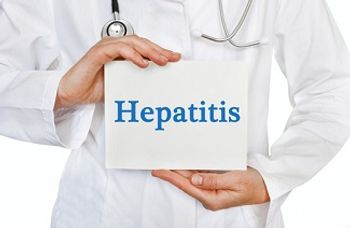
Drug-Resistant Gut Microbes Could Inform Empiric Treatment of Systemic Infection
A risk-based screening for multidrug-resistant gut microbes could improve accuracy and timeliness of empiric antibiotic treatment of systemic infection.
Detecting multidrug-resistant organism (MDRO) colonization in the gut could inform empiric antibiotic treatment of systemic infection, according to investigators who
Evan Zasowski, PharmD, Department of Clinical Pharmacy, School of Pharmacy, University of California San Francisco, San Francisco, CA and colleagues point out that the gastrointestinal tract can serve as a point of entry for MDRO from the environment, “an arena for antimicrobial resistance transfer and selection…a known contributor to subsequent infection.”
“Screening for MDRO colonization is a potentially useful antimicrobial stewardship tool to guide initial empiric antibiotic therapy, as it can identify patients who are at risk for MDRO infection,” Zasowski and colleagues suggest.
The investigators note, however, that few patients are screened for gut MDRO, in part because it has not been considered cost-effective. Given the potential to facilitate timeliness and accuracy of empiric antibiotic selection, however, the investigators sought to establish a basis for selective screening in those at high risk of MDRO colonization. They anticipate that targeted screening would include patients with conditions such as hematologic malignancy, critical illness or Clostridioides difficile infection (CDI).
“Identifying patients where screening can provide greatest benefit is a prudent approach to assessing all patients’ MDRO risk without performing costly test in all,” Zasowski and colleagues argue.
To develop and compare various MDRO colonization risk stratification approaches, the investigators conducted a retrospective study of patients hospitalized for CDI, a population at increased risk of MDRO colonization.The majority of patients were female (53.8%) and the median age was 64.5 (52-75 years). Common comorbidities were diabetes (38.8%), gastroesophageal reflux disease (18.3%), cerebrovascular disease (17.5%), heart failure (17.1%), chronic kidney disease (17.1%) and liver disease (12.1%).
Leftover stool samples for 240 patients were retrieved from the centralized research laboratory at the University of Houston. Each was plated on antibiotic-selective media to isolate for potential vancomycin-resistant enterococci (VRE), gram negatives such as carbapenem-resistant Enterobacterales (CRE) or methicillin-resistant Staphylococcus aureus (MRSA). Fifty patients (20.8%) were found to have had an MDRO-positive stool sample, including 35 (14.6%) with VRE, 18 (7.5%) with MRSA, and 2 (0.8%) with CRE.Five patients (2.1%) were positive for both VRE and MRSA.
Prior clindamycin and healthcare exposure were explanatory variables to MDRO gut colonization (aOR 3.257 [95% CI 0.842-12.597] and 2.138 [0.964-4.740], respectively). Prior fluoroquinolone and prior vancomycin were also independently associated with MDRO (aOR 2.404 [95% CI 1.095-5.279] and 1.996 [1.014-3.932], respectively).
Zasowski and colleagues reported that patients with MDRO colonization had higher degree of comorbidity (median Charlson Comorbidity Index of cohort was 2 on 1-3 scale); were more likely to have had high-risk healthcare exposure (eg, admission from nursing home); and were more likely to have received antibiotics in prior 90 days.
Although the investigators had developed a logistic regression-derived risk score from patient characteristics associated with MDRO colonization, they noted that it was not significantly more predictive than the finding of prior healthcare exposure or prior antibiotic treatment. All three indices were significantly better predicting MDRO colonization than random chance.
“A simplified approach using prior healthcare exposure and receipt of prior antibiotics known to increase CDI risk identified patients at risk for MDRO gut microbiome colonization as effectively as individual patient/antibiotic risk modeling,” Zasowski and colleagues concluded.
Newsletter
Stay ahead of emerging infectious disease threats with expert insights and breaking research. Subscribe now to get updates delivered straight to your inbox.

















































































































































































































































































